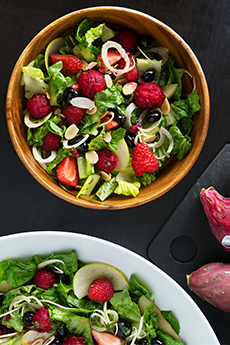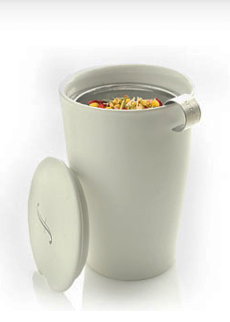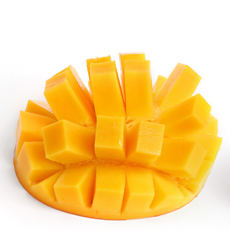|

[1] Prickly pears are also called cactus pears: They are the fruits of some varieties of cactus (photo © Mercato).

[2] The fruits growing on the cactus (photo © Frankie Lopez | Unsplash).

[3] A salad of romaine, fennel, cactus pears, apples, berries and almonds. Here’s the recipe (photo © Andy Boy).

[4] You can find prickly pear sorbet in Latino markets and elsewhere. Or you can make your own with this recipe (photo © Safeway).
|
|
Now that it’s May 1st, we’ve got four days to focus on Cinco de Mayo culinary tributes. For sure, we’ll bring on the salsa and the cocktails.
But first, here’s a fresh idea that may take some hunting: prickly pear salad dressing. The recipe is below.
Prickly pears are also known as cactus pears and opuntia. They’re the fruit of several species of cactus (most particularly, Opuntia ficus-indica and Opuntia tuna)—photo #2).
Check Latino and International markets for the fruit (or you can purchase them online from Melissa’s Produce and Mercato, for starters).
A popular food in Mexico, the fruits have been used both for food and medicinal cures since prehistoric times.
Prickly pears have a purple-red or green exterior with soft, ruby-red or golden-colored flesh and tiny, edible seeds.
They are low in calories—just 40 calories each.
They’re very high in dietary fiber, magnesium, vitamin C, and high in calcium, potassium, riboflavin, and vitamin B6.
The fruits have a mild, floral flavor similar to melon or dragon fruit.
HOW TO SERVE PRICKLY PEARS
Prickly pears are typically served cold in fruit salads or green salads. Think of them as the Mexican alternative to kiwi, peeled and sectioned with the seeds.
For dessert, they can be sprinkled with brown sugar and lime juice and topped with whipped cream.
Prickly pears are used to make candy, jelly, juice, liqueur, tea, and soft drinks.
In Mexico, they’re used in salads, soups, beverages, and desserts.
The stems or pads of the cactus called nopales [the Aztec/Nahuatl name for the cactus], are sliced, diced, and cooked for use in Mexican egg dishes, tacos, salads, and other recipes, including cactus fries.
Whatever you make, be sure to cut off the outer skin of the fruit before consuming it—you don’t want to ingest any of the small needles.
RECIPE: PRICKLY PEAR SALAD DRESSING
This vinaigrette becomes pink with the addition of prickly pear purée. Use it on green salads and fruit salads.
Thanks to Ida Rodriguez of Melissa’s Produce for the recipe.
While you’re at it, make refreshing prickly pear sorbet for dessert.
Ingredients For 1 Cup
1/2 cup prickly pear, puréed
1/3 cup salad oil
1 teaspoon salt
1/2 teaspoon sugar or substitute
3 tablespoons red wine vinegar
Preparation
1. SHAKE all ingredients in a covered jar.
|







